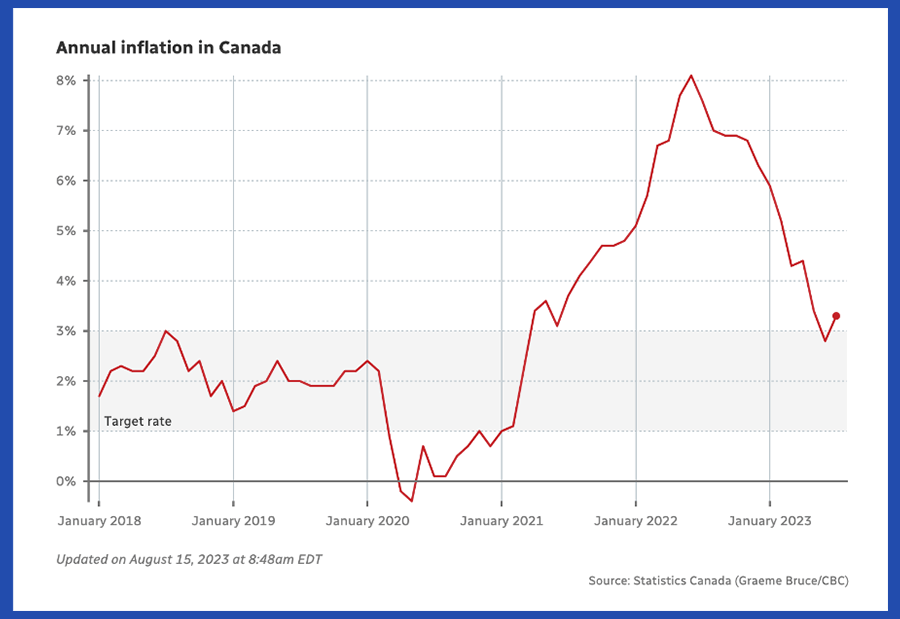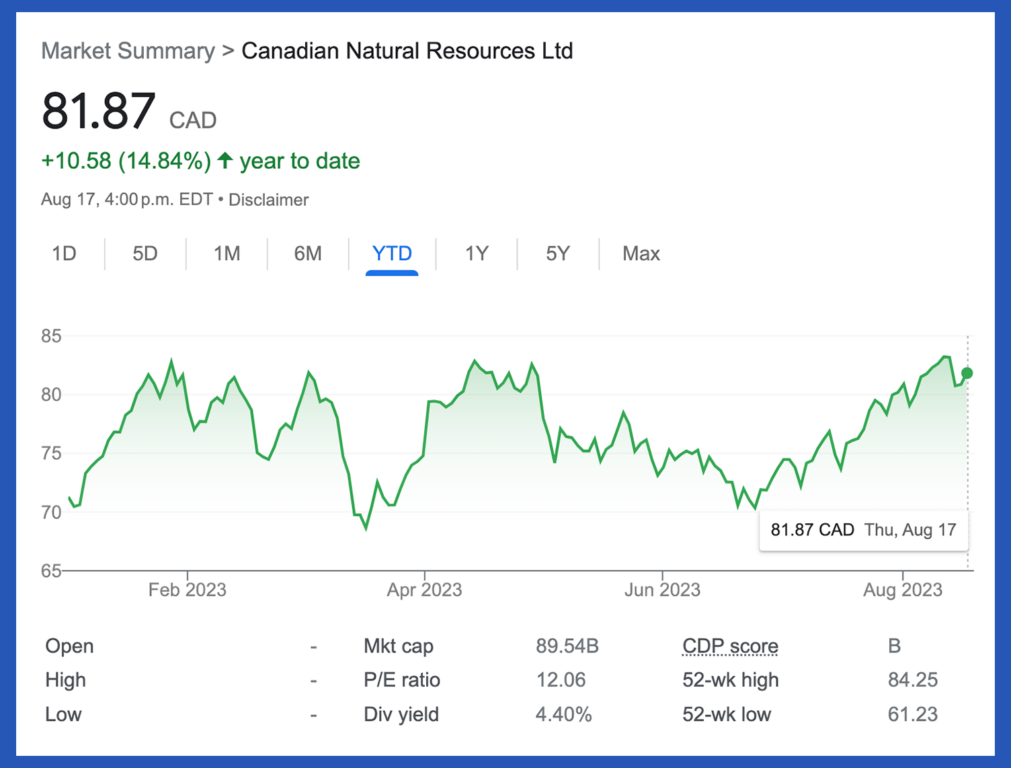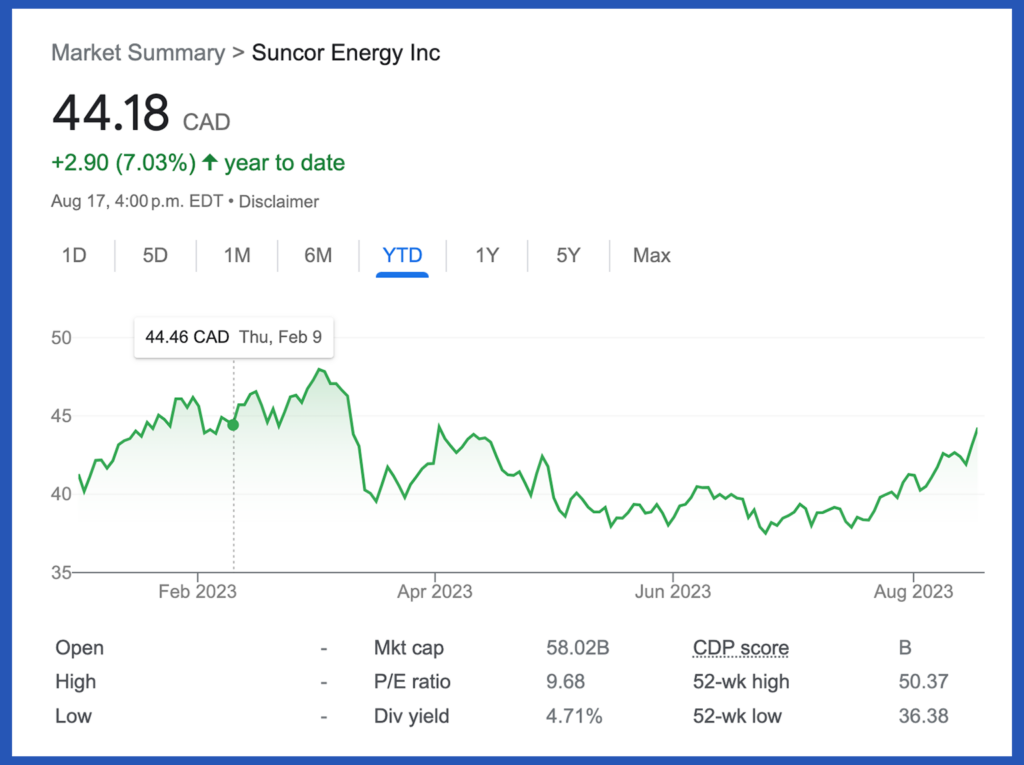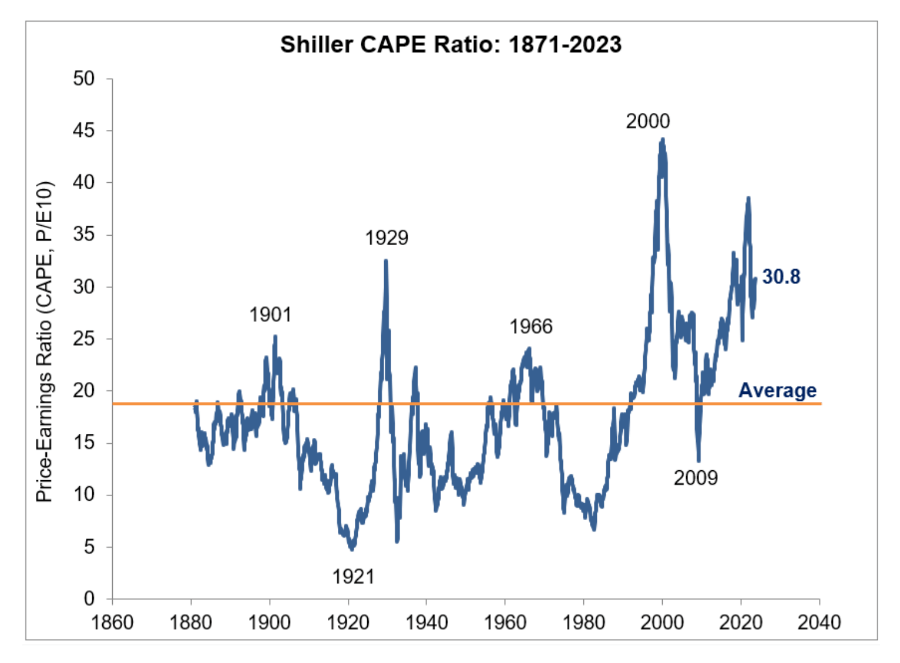Making sense of the markets this week: August 20, 2023
Food and shelter costs still inflating, U.S. retailers post good quarters, Canadian oil stocks reward shareholders, and do stock valuations matter?
Advertisement
Food and shelter costs still inflating, U.S. retailers post good quarters, Canadian oil stocks reward shareholders, and do stock valuations matter?

Kyle Prevost, editor of Million Dollar Journey and founder of the Canadian Financial Summit, shares financial headlines and offers context for Canadian investors.
Canada’s central bank may be getting backed into a corner by Tuesday’s 3.3% inflation report from Statistics Canada.
Up until this month, inflation numbers had been moving in the right direction for a year, as the rate came down from an annualized 9.1% to 2.8% in June. However, many economists warned that it would be difficult to keep the much-quoted headline inflation number on a downward trend each month, as the decline chiefly relied on gasoline costs, which started to decrease substantially in July 2022.

Here’s a look at some of the more notable year-over-year inflation figures:
But it wasn’t all bad news, as durable goods, clothing, transportation and household furnishings were all up less than 0.5%. The all-important core inflation measurement was down to 4.2%, falling from 4.6% in June.
With the 3.3% inflation figure substantially higher than the Bank of Canada’s 2% target (and moving in the wrong direction), the BoC will face increased pressure to raise interest rates again in September. Experts are split on the likelihood of this scenario.
BMO chief economist Douglas Porter may have done the best job of summing up the report, saying, “There’s no sense sugar-coating this one—it is not a good report for the Bank of Canada.”
However, former Bank of Canada governor Stephen Poloz said the medium-term forecast was much less dire. “We have all the ingredients of a disinflation that’s pretty orderly,” Poloz stated, as he talked about rising productivity per worker due to data sharing and artificial intelligence.
Most tellingly, he finished by concluding, “We could have a recession, we could have stagflation, we could have a soft landing, or a softish landing. If someone gives you a definitive answer, they’re making it up. The tools don’t exist to do that. As a business or as a household, prepare yourself for a range of possibilities.”
You can read more about Canadian inflation-hedging investments at MillionDollarJourney.ca.
As several major U.S. retailers reported this week, it appears that while we might not be back to the retail halcyon days of the pandemic, earnings are beginning to bounce back. (All numbers in this section are in U.S. dollars.)
Walmart (WMT/NYSE): Earnings per share came in at $1.84 (versus $1.71 predicted), and revenues totalled $161.63 billion (versus $160.27 billion predicted). Share prices were initially up on Thursday after earnings were announced, but they were down 2% at the end of Thursday after getting caught up in a general market sell-off.
Walmart’s e-commerce sales were up 24% year-over-year and represented the biggest highlight for the company.
Target (TGT/NYSE): Earnings per share were $1.80 (versus $1.39 predicted) and revenue came in at $24.77 billion (versus $25.16 billion predicted). Shares were up nearly 3% on Tuesday.
Target CEO Brian Cornell contextualized the report, saying, “As we look at the consumer landscape today, we recognize the consumer is still challenged by the levels of inflation that they’re seeing in food and beverage and household essentials. So that’s absorbing a much bigger portion of their budget.”
Home Depot (HD/NYSE): Earnings per share topped expectations at $4.65 (versus $4.45 predicted), and revenue was $42.92 billion (versus $42.23 billion predicted). Shares were up less than 1% on Tuesday.
Home Depot’s chief financial officer, Richard McPhail echoed Target’s inflation-related comments, saying that there is “continued caution on the part of consumers when it comes to larger-ticket, more discretionary spending.”
TJX (TJX/NYSE): Earnings per share topped expectations at $0.85 (versus $0.77 predicted), and revenue was $12.76 billion (versus $12.45 billion predicted). Shares were up over 3% on Wednesday.
Interestingly, the discount retailer—which runs T.J. Maxx, Marshalls, HomeGoods, Sierra and HomeSense—reported that much of its 23% rise in year-over-year profits was due to securing a large amount of premium merchandise from high-end retailers looking for a quick solution to their bloated inventory problem.
Overall, the tone of retailers’ earnings reports was cautious, and forward guidance definitely anticipates a more tapped-out consumer later in 2023. That said, it appears the sector has, by and large, been able to keep cost inflation under control, resulting in solid profits.
With two of Canada’s largest energy companies reporting over the last few weeks, the good news is that earnings are still healthy; the bad news is that the price of oil has inevitably affected bottom lines relative to last year.
Both companies cited the wildfires in Western Canada for briefly disrupting operations throughout the quarter. With Western Canadian Select (Canada’s largest heavy crude oil classification) oil prices forecast to remain strong through the end of 2023, Canada’s oil sands operators should continue to post strong results in the short term.
While Suncor has had a solid 2023, CNQ has been a serious outperformer so far this year. When looking at the charts below, don’t forget to account for Suncor’s current annual dividend yield of 4.70% and CNQ’s 4.37%.


Notably, CNQ reported that returns to shareholders totalled $4.3 billion this year, with $2.9 billion in dividends being paid out and $1.4 billion going towards share repurchases. Similarly, Suncor has passed along $1 billion to shareholders so far in 2023.
You can check out our take on buying Suncor stock in 2023, as well as Canadian energy stocks at MillionDollarJourney.ca.
Common-sense investing guru Ben Carlson is back with an interesting take on stock valuations.
Now, obviously the current valuation of a specific stock matters to some degree (as Carlson himself has written). However, when we’re talking about long-reaching historical averages of entire stock markets, the picture is murkier.
For many years, the cyclically adjusted price-to-earnings (CAPE) ratio was the Holy Grail of stock valuations. That figure takes into account the current stock price relative to average earnings over a 10-year period. While no single measurement has proven very good at forecasting short- and medium-term market returns over the last 150 years, the CAPE ratio probably comes the closest.
The only problem is that the CAPE ratio stopped working as a predictive tool about 30 years ago.

The idea used to be that you could purchase stock market assets at very advantageous times, if you just waited for the CAPE ratio to fall below average. Conversely, if the CAPE was high, it meant the stock market was due for a correction.
Carlson goes on to point out the following (all metrics are based exclusively on the U.S. stock market):
There are many possibilities and explanations as to how this can all be true.
They range from the idea that the market really has been overvalued for 30-plus years to the theory that lower taxes, better productivity, more understanding of stock market risk/reward, and better monetary policy have all led to people simply being more willing to purchase stocks at higher prices.
Carlson’s conclusion is that while valuations should still matter for individual companies, perhaps we should be putting a lot less weight on them when it comes to broader markets. In other words, “Becoming a slave to the data can become a liability if you don’t put it into context.”
He goes on to state:
“Things like demographics, money allocation decisions, investor risk appetite, the prevalence of tax-deferred retirement vehicles, the trillions of dollars controlled by financial advisors, how institutions are positioned matter more. The past 15 years of U.S. stock market returns are a wonderful example of how hard it is to predict what’s going to happen next. … Do valuations matter? The majority of investors would probably be better off if they ignored them most of the time.”
Keep valuations in mind as you try to make sense of the markets this week.
Share this article Share on Facebook Share on Twitter Share on Linkedin Share on Reddit Share on Email